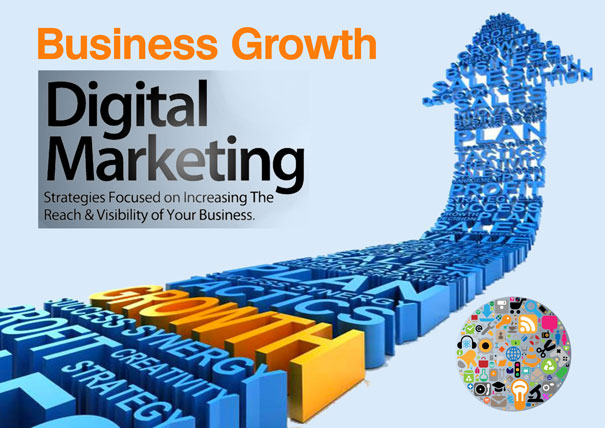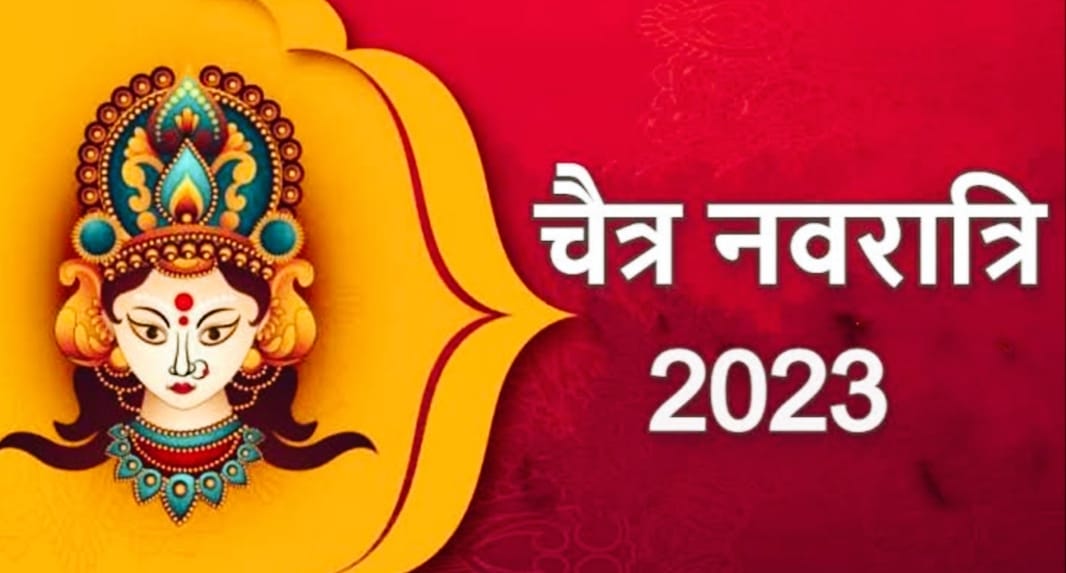In a move that is sure to heat up the social media wars, Instagram's Threads app attracted over 50 million users in a single day. The app, which is designed as a more private and intimate alternative to Twitter, was launched on Thursday and quickly became a hit with users.

Thread is a text-based app that allows users to share photos, videos, and text with their close friends. The app is integrated with Instagram, so users can easily share their Threads posts to their main Instagram feed. However, Threads is also designed to be more private than Instagram, with features like end-to-end encryption and the ability to control who can see your posts.
The success of Threads is a major coup for Instagram, which has been looking for ways to challenge Twitter's dominance in the micro-blogging space. Twitter has been struggling in recent years, as users have flocked to other platforms like Instagram and TikTok. Threads could help Instagram to win back some of those users, and it could also attract new users who are looking for a more private and intimate social media experience.
The launch of Threads is also a sign of the intensifying rivalry between Instagram and Twitter. Both platforms are constantly trying to innovate and attract new users, and Threads is just the latest example of that. It will be interesting to see how Twitter responds to Threads, and whether it can launch a successful counter-measure.
In the meantime, Threads is off to a strong start. The app has already been downloaded over 100 million times, and it is showing no signs of slowing down. It remains to be seen whether Threads can become a major player in the social media space, but it is certainly off to a promising start.
Here are some of the factors that contributed to Threads' success:
- The app's focus is on privacy. Threads are designed to be a more private and intimate social media experience than Twitter. This is a major selling point for users who are concerned about their privacy.
- The app's integration with Instagram. Threads are integrated with Instagram, so users can easily share their Threads posts to their main Instagram feed. This makes it easy for users to connect with their friends and followers on both platforms.
- The app's timing. Threads was launched at a time when Twitter is struggling. This gave Threads a major advantage, as users were looking for a new and improved social media experience.
Here are some of the challenges that Threads face:
- The competition from Twitter. Twitter is the dominant player in the micro-blogging space, and it will be difficult for Threads to compete with it.
- The app's limited features. Threads is a relatively simple app, and it lacks some of the features that users expect from a social media platform. For example, Threads does not have a direct messaging feature.
- The app's lack of brand recognition. Thread is a new app, and it does not have the same brand recognition as Twitter. This could make it difficult for Threads to attract new users.
Overall, Threads is a promising app with a lot of potential. The app has already been successful, and it could become a major player in the social media space. However, Threads faces some challenges, and it will be interesting to see how the app performs in the long term.
In today’s fast-paced world, finding time to prepare healthy snacks can be challenging. However, maintaining a nutritious diet is essential for keeping energy levels high and supporting overall well-being. Here are some quick and healthy snack ideas perfect for busy days:
1. Greek Yogurt with Honey and Berries

Greek yogurt is a protein-packed snack that can keep you full and satisfied. Add a drizzle of honey and a handful of fresh berries for a touch of sweetness and a boost of antioxidants.
**Ingredients:**
- 1 cup Greek yogurt
- 1 tablespoon honey
- 1/2 cup mixed berries (blueberries, strawberries, raspberries)
**Preparation:**
Mix the Greek yogurt with honey and top with berries. This snack provides protein, healthy fats, and fiber.
2. Apple Slices with Almond Butter

Apples are rich in fiber and antioxidants, while almond butter provides healthy fats and protein. This combination makes for a satisfying and nutritious snack.
**Ingredients:**
- 1 apple, sliced
- 2 tablespoons almond butter
**Preparation:**
Slice the apple and dip in almond butter. You can also sprinkle some cinnamon on top for added flavor.
3. Hummus and Veggie Sticks

Hummus is a delicious dip made from chickpeas, offering protein and fiber. Pair it with fresh veggie sticks for a crunchy and nutrient-dense snack.
**Ingredients:**
- 1/2 cup hummus
- Carrot sticks, cucumber slices, bell pepper strips, and celery sticks
**Preparation:**
Serve the hummus with a variety of veggie sticks. This snack is perfect for on-the-go and can be easily packed in a small container.
4. Trail Mix

Create a custom trail mix by combining your favorite nuts, seeds, and dried fruits. This snack is packed with healthy fats, protein, and fiber, providing sustained energy throughout the day.
**Ingredients:**
- 1/4 cup almonds
- 1/4 cup walnuts
- 1/4 cup pumpkin seeds
- 1/4 cup dried cranberries or raisins
- 1/4 cup dark chocolate chips (optional)
**Preparation:**
Mix all ingredients in a bowl and portion into snack-sized bags. This is a great snack to keep in your bag or desk drawer.
5. Cottage Cheese and Pineapple

Cottage cheese is high in protein and pairs well with the sweetness of pineapple. This combination makes for a refreshing and filling snack.
**Ingredients:**
- 1 cup cottage cheese
- 1/2 cup pineapple chunks (fresh or canned in juice)
**Preparation:**
Combine the cottage cheese with pineapple chunks. This snack is simple to prepare and provides a good balance of protein and carbohydrates.
6. Smoothie Packs

Prepare smoothie packs in advance by portioning out your favorite fruits and vegetables. When you're ready for a snack, just blend with a liquid of your choice.
**Ingredients:**
- 1 banana, sliced
- 1/2 cup strawberries
- 1/2 cup spinach
- 1/2 cup Greek yogurt
- 1 cup almond milk (or any milk of your choice)
**Preparation:**
Portion the banana, strawberries, and spinach into freezer bags. When ready to consume, blend with Greek yogurt and almond milk for a nutritious smoothie.
7. Hard-Boiled Eggs

Hard-boiled eggs are an excellent source of protein and healthy fats. They are easy to prepare in advance and can be seasoned to taste.
**Ingredients:**
- 2 eggs
**Preparation:**
Boil the eggs, peel, and store them in the fridge. When you need a quick snack, grab an egg and add a sprinkle of salt, pepper, or your favorite seasoning.
Tips for Snacking Smart
- **Plan Ahead**: Prepare your snacks in advance to avoid reaching for unhealthy options.
- **Portion Control**: Keep portions reasonable to avoid overeating.
- **Balance**: Aim for a mix of protein, healthy fats, and carbohydrates to keep you full and satisfied.
Incorporating these healthy snacks into your daily routine can help maintain energy levels and support overall health, even on the busiest of days.
By preparing these snacks ahead of time, you can ensure that you have nutritious options readily available, making it easier to stick to a healthy diet. Enjoy these delicious and easy-to-make snacks that will keep you fueled throughout your day!

In the world of digital marketing, Search Engine Optimization (SEO) has become an essential part of any business's online presence. SEO is a practice that involves optimizing your website to rank higher in search engine results pages (SERPs) for specific keywords and phrases. The higher your website ranks, the more traffic and potential customers you can attract.
SEO is not a one-time process. It requires continuous monitoring, tweaking, and improvement to keep your website ranking high in SERPs. Fortunately, there are several SEO tools available that can help you optimize your website and boost your ranking. In this blog, we will discuss the top SEO tools you can use to improve your website's visibility and increase your organic traffic.
Google Analytics is a web analytics service that allows you to track and analyze your website's traffic. It provides valuable insights into how users interact with your website, including the pages they visit, how long they stay on each page, and where they are located. With Google Analytics, you can also track your website's performance in terms of bounce rate, click-through rate (CTR), and conversion rate.
Google Analytics can help you identify areas of your website that need improvement. For example, if you notice a high bounce rate on a particular page, you can investigate why users are leaving the page quickly and make changes to improve the page's engagement. Additionally, Google Analytics can help you measure the effectiveness of your SEO efforts and adjust your strategy accordingly.
2. Ahrefs
Ahrefs is a comprehensive SEO tool that provides you with an in-depth analysis of your website's backlink profile, competitor analysis, keyword research, and more. With Ahrefs, you can track your website's backlinks, identify the sources of your backlinks, and analyze your competitors' backlink profiles. You can also use Ahrefs to find new keywords and phrases to target and monitor your website's rankings for specific keywords.
Ahrefs can help you identify opportunities for link building, optimize your website's content for specific keywords, and monitor your website's performance over time. The tool also offers a range of reports and dashboards that make it easy to visualize your website's performance and identify areas that need improvement.
3.SEMrush
SEMrush is a popular SEO tool that provides a range of features to help you optimize your website for search engines. With SEMrush, you can conduct keyword research, track your website's ranking for specific keywords, and analyze your competitors' websites. The tool also offers on-page SEO analysis, backlink analysis, and a range of other features to help you improve your website's performance.
One of the unique features of SEMrush is its ability to perform site audits. The tool can scan your website for technical issues, such as broken links, duplicate content, and crawl errors. It can also provide recommendations for improving your website's performance and fixing any issues that may be impacting your ranking.
4. Moz Pro
Moz Pro is an all-in-one SEO tool that provides a range of features to help you optimize your website for search engines. With Moz Pro, you can conduct keyword research, track your website's ranking for specific keywords, and analyze your competitors' websites. The tool also offers on-page SEO analysis, backlink analysis, and site auditing features.
One of the unique features of Moz Pro is its Page Optimization feature. This feature analyzes your website's pages and provides recommendations for improving on-page SEO elements, such as title tags, meta descriptions, and content optimization. The tool also offers a range of reports and dashboards to help you visualize your website's performance and identify areas that need improvement.
5. Google Search Console
Google Search Console is a free SEO tool provided by Google that allows you to monitor and optimize your website
Conclusion
SEO is a complex and ongoing process that requires continuous monitoring, tweaking, and improvement. Fortunately, there are several SEO tools available that can help you optimize your website and boost your ranking in search engine results pages. By using these tools to analyze your website's performance, identify areas for improvement, and make data-driven decisions, you can increase your organic traffic and attract more potential customers to your website.

Keyword research is one of the most important aspects of Search Engine Optimization (SEO). It involves finding the words and phrases that people use when searching for a product, service, or information online. By targeting the right keywords, you can increase your website's visibility in search engine results pages (SERPs), attract more traffic, and ultimately boost your business
In this blog post, we'll cover the basics of keyword research and provide some tips and tools for finding the best keywords for your website
Why is Keyword Research Important?
Keyword research is important for several reasons:
1. It helps you understand your target audience: By researching the keywords your target audience is using, you can gain insights into their interests, needs, and pain points.
2. It helps you optimize your content: By incorporating relevant keywords into your website's content, you can make it more visible and appealing to search engines.
3. It helps you stay ahead of the competition: By identifying the keywords your competitors are targeting, you can adjust your SEO strategy to stay ahead of them.
4. It helps you measure your success: By tracking your website's performance for specific keywords, you can measure the success of your SEO efforts and adjust your strategy as needed.
How to Conduct Keyword Research
Here are some steps you can follow to conduct keyword research:
1. Brainstorm potential keywords: Start by brainstorming a list of potential keywords that are relevant to your business or industry. You can use tools like Google Autocomplete or Keyword Tool to generate ideas.
2. Analyze search volume and competition: Once you have a list of potential keywords, use a keyword research tool like Google Keyword Planner, Ahrefs, or SEMrush to analyze their search volume and competition level. You want to choose keywords that have a high search volume but low competition.
3. Consider user intent: It's important to consider the intent behind the keywords you choose. Are people searching for information, products, or services? Understanding user intent can help you choose keywords that will attract the right audience.
4. Focus on long-tail keywords: Long-tail keywords are longer, more specific phrases that typically have lower search volume but are easier to rank for. Focusing on long-tail keywords can help you attract a more targeted audience.
5. Refine your list: After analyzing your keywords, refine your list to include the most relevant and high-performing keywords. You can also group your keywords into themes or topics to make it easier to create content around them.
Tools for Keyword Research
Here are some tools you can use for keyword research:
1. Google Keyword Planner: This free tool from Google can help you find keywords related to your business and analyze their search volume and competition level.
2. Ahrefs: A paid tool that offers in-depth keyword analysis, including search volume, keyword difficulty, and competitor analysis.
3. SEMrush: Another paid tool that offers keyword research, competitor analysis, and more.
4. Keyword Tool: A free tool that generates keyword ideas from Google Autocomplete, YouTube, Bing, and more.
Here are some additional tips to help you get the most out of your keyword research:
1. Use a variety of keyword research tools: While Google Keyword Planner is a great place to start, it's important to use multiple tools to get a comprehensive view of the keywords in your industry. Each tool has its own strengths and weaknesses, so using a variety of tools can help you uncover more opportunities.
2. Consider local search: If your business has a physical location, it's important to include location-based keywords in your research. For example, if you're a dentist in New York City, you might target keywords like "dentist NYC" or "teeth cleaning Upper East Side."
3. Look for content gaps: When researching keywords, pay attention to the content that's already ranking for those keywords. Are there any gaps in the content that you can fill with your own content? For example, if you notice that there are no how-to guides for a particular keyword, you could create your own.
4. Use keyword variations: People often search for the same thing in different ways, so it's important to use variations of your target keywords. For example, if your target keyword is "dog food," you might also use variations like "puppy food," "best dog food," or "organic dog food."
5. Monitor and adjust your strategy: Keyword research is an ongoing process, and it's important to monitor your website's performance and adjust your strategy as needed. Keep track of the keywords that are driving the most traffic to your website and make adjustments to your content and targeting as needed.
Sure, here are a few more advanced keyword research techniques:
1. Analyze your competitors' keywords: Identify your top competitors and analyze the keywords they are ranking for. This will give you insights into their SEO strategy and help you identify new keyword opportunities.
2. Use keyword modifiers: Keyword modifiers are words or phrases that you can add to your primary keyword to make it more specific. For example, if your primary keyword is "coffee," you might use modifiers like "organic coffee," "best coffee," or "coffee near me."
3. Use semantic keywords: Semantic keywords are words or phrases that are related to your primary keyword. For example, if your primary keyword is "kitchen appliances," semantic keywords might include "blender," "microwave," or "dishwasher." Including these keywords in your content can help improve its relevance and attract more traffic.
4. Use long-tail keyword phrases: Long-tail keyword phrases are longer and more specific than your primary keyword. For example, if your primary keyword is "guitar lessons," a long-tail keyword phrase might be "beginner guitar lessons for kids." Long-tail keywords are often less competitive and can help you attract a more targeted audience.
5. Use Google Trends: Google Trends is a free tool that allows you to see the popularity of a keyword over time. You can use it to identify seasonal trends or to see how the popularity of a keyword has changed over time.
Here are a few more tips to take your keyword research to the next level:
1. Focus on user intent: Instead of just looking at search volume, it's important to consider the user's intent behind the search. What are they really looking for? What problem are they trying to solve? By understanding the user's intent, you can create content that better meets their needs and improves your chances of ranking.
2. Use keyword research to inform your content strategy: Keyword research can help you identify the topics and types of content that your audience is interested in. Use this information to develop a content strategy that targets your ideal customers and positions your business as an authority in your industry.
3. Consider voice search: With the rise of voice assistants like Alexa and Siri, it's important to consider how people are using voice search to find information. Voice searches are often more conversational and longer than text searches, so it's important to optimize your content for long-tail keywords and natural language.
4. Use negative keywords: Negative keywords are words or phrases that you don't want to target in your SEO strategy. For example, if you sell high-end designer shoes, you might use negative keywords like "cheap shoes" or "discount shoes" to ensure that your ads are only shown to people who are interested in your high-end products.
5. Consider international SEO: If you have a global audience, it's important to consider international SEO. This involves targeting keywords that are relevant to different regions and languages and optimizing your website for different search engines and cultural preferences.
Keyword research is an essential part of any successful SEO strategy. By taking a comprehensive and strategic approach to your keyword research, you can attract more traffic, improve your website's visibility, and position your business as a leader in your industry.

Weightlifter Popy Hazarika is looking to follow up on Jeremy Lalrinnunga and Mirabai Chanu's gold medal efforts. Meanwhile, India crushed Pakistan by 8 wickets in cricket while the men's table tennis team sailed into the semi-finals.
CWG 2022 Day 3: India's first, and thus far only medal of the day, was gold with weightlifter Jeremy Lalrinnunga winning the 67kg final. Jeremy, 19, lifted 136kg in his first snatch effort and bettered it by successfully attempting 140kgs in his next try, which is a meet record. He then coupled it with a bonkers lift of 160kg in the Clean & Jerk category to finish with a Games record total lift of 300kg, thus bringing India its fifth medal of CWG 2022. Meanwhile, Boxing world champion Nikhat Zareen dominated her opponent in the women's 50kg round of 16 but it was the end of the road for Shiva Thapa in men's men's 60kg. The men's table tennis team eased into the semi-final with a 3-0 win over Bangladesh while the women's cricket team dismissed Pakistan for a paltry 99.
(Note: Medals tally will be updated as and when events conclude)


Sir Ratan Tata, the legendary Indian businessman, philanthropist, and former chairman of Tata Sons, has been honored with the highest civilian award in Australia - the Knight Grand Cross of the Order of Australia. This is the latest in a long list of accolades received by the iconic industrialist, who is widely regarded as one of the most influential business leaders in India and around the world. In this blog post, we will discuss the details of the honor and the contributions that Sir Ratan Tata has made to the business world and beyond.
Who is Sir Ratan Tata?
Sir Ratan Tata is one of the most respected business leaders in India and around the world. He is the former chairman of Tata Sons, the holding company of the Tata Group, which is one of the largest conglomerates in India. Sir Ratan Tata was born in 1937 into the Tata family, which has been instrumental in shaping the Indian economy for over a century. He took over the reins of Tata Sons in 1991 and served as the chairman until his retirement in 2012.

What is the Knight Grand Cross of the Order of Australia?
The Knight Grand Cross of the Order of Australia is the highest civilian honor in Australia. It is awarded to individuals who have made significant contributions to their respective fields, or to society as a whole. The award was created in 1975 by Queen Elizabeth II, and it is awarded on Australia Day (January 26) each year. The honor recognizes Sir Ratan Tata's contributions to the business world and his commitment to social causes.
Sir Ratan Tata's Contributions to Business and Philanthropy
Sir Ratan Tata has made significant contributions to the business world over the years. He is widely regarded as a visionary leader who transformed the Tata Group into a global conglomerate with interests in industries ranging from steel to software. Under his leadership, the Tata Group expanded its global footprint, acquiring companies such as Tetley Tea and Jaguar Land Rover. Sir Ratan Tata is also known for his philanthropic work. He has set up several foundations to support social causes such as education, healthcare, and rural development. The Tata Trusts, one of the largest philanthropic organizations in India, is a testament to his commitment to social causes.
Sir Ratan Tata's Reaction to the Honor
Sir Ratan Tata expressed his gratitude and appreciation for the honor, stating that it was a great privilege to receive such recognition from a country that he deeply admires. He also said that he believes in the importance of building strong relationships between India and Australia and that he hopes to continue working towards this goal in the future.

Conclusion
Sir Ratan Tata's honor is a testament to his contributions to the business world and his commitment to social causes. His leadership and vision have transformed the Tata Group into a global conglomerate, and his philanthropic work has made a significant impact on society. The Knight Grand Cross of the Order of Australia is a well-deserved honor for a business leader who has inspired and influenced generations of entrepreneurs around the world.

Digital marketing is one of the most important aspects of any business today. With more and more people spending their time online, it's essential for businesses to have a strong digital presence if they want to reach their target audience and achieve their goals.

In 2023, digital marketing is going to be more important than ever before. Here are some of the top trends that businesses need to be aware of:
- The rise of artificial intelligence (AI)
AI is already being used in a variety of ways in digital marketing, and its use is only going to grow in the years to come. AI can be used for tasks such as creating personalized marketing campaigns, optimizing website content, and managing social media accounts.
- The growth of mobile marketing
More and more people are using their smartphones and tablets to access the internet. This means that businesses need to make sure that their websites and marketing campaigns are optimized for mobile devices.
- The importance of video content
Video content is becoming increasingly popular, and businesses that can create engaging and informative videos will be at an advantage. Video can be used to tell stories, educate customers, and promote products and services.
- The need for personalization
In today's competitive marketplace, businesses need to find ways to stand out from the crowd. One way to do this is to personalize their marketing campaigns. This means targeting specific groups of people with messages that are relevant to them.
- The importance of data analytics
Data analytics is essential for businesses that want to track the success of their digital marketing campaigns. By analyzing data, businesses can see what's working and what's not, and make adjustments accordingly.
These are just a few of the top digital marketing trends for 2023. By keeping an eye on these trends, businesses can ensure that they are using the latest tools and strategies to reach their target audience and achieve their goals.
How to use digital marketing to grow your business

Digital marketing can be a powerful tool for businesses of all sizes. By using the right strategies, businesses can reach a wider audience, generate leads, and increase sales.
Here are some tips on how to use digital marketing to grow your business:
- Create a strong website
Your website is your online home, so it's important to make sure it's well-designed, informative, and easy to use. Make sure your website is optimized for search engines so that potential customers can find you easily.
- Use social media
Social media is a great way to connect with potential customers and build relationships. Share interesting content, engage with your audience, and run social media ads to reach a wider audience.
- Create high-quality content
Content is king in the world of digital marketing. Create high-quality content that is relevant to your target audience and that will provide them with value. This could include blog posts, infographics, videos, or e-books.
- Use email marketing
Email marketing is a great way to stay in touch with your customers and promote your products or services. Collect email addresses from your website visitors and send them regular newsletters, updates, and promotions.
- Run paid advertising
Paid advertising can be a great way to reach a wider audience and generate leads. Use Google AdWords, Facebook Ads, or other platforms to run targeted ads that will reach people who are interested in your products or services.
- Track your results
It's important to track the results of your digital marketing campaigns so that you can see what's working and what's not. Use analytics tools to track website traffic, social media engagement, and email open rates.
By following these tips, you can use digital marketing to grow your business and reach your target audience.
Conclusion
Digital marketing is a constantly evolving field, but the trends that we've discussed here are likely to remain relevant in 2023 and beyond. By keeping an eye on these trends and using the right strategies, businesses can ensure that they are using digital marketing to their advantage.

Introduction: Building a successful ad company can be a daunting task, but it is possible if you follow certain tips and strategies. In this blog post, we will discuss 10 proven tips that can help you build a thriving ad company. These tips have been compiled from years of experience in the advertising industry and are designed to help you achieve your business goals.

Table of Contents:
- Define your brand
- Identify your target audience
- Develop a unique value proposition
- Create a strong online presence
- Build a diverse team
- Invest in technology
- Establish partnerships
- Offer exceptional customer service
- Measure and analyze results
- Continuously innovate

Tip 1: Define your brand
Your brand is the foundation of your ad company. It’s what sets you apart from your competitors and helps you connect with your audience. When defining your brand, it’s important to consider your mission statement, brand personality, and messaging. Your brand should be consistent across all platforms, including your website, social media, and advertising campaigns.
Tip 2: Identify your target audience
To build a successful ad company, you need to understand your target audience. This means identifying their needs, interests, and behaviors. Once you have a clear understanding of your audience, you can tailor your advertising campaigns to resonate with them.
Tip 3: Develop a unique value proposition
A unique value proposition (UVP) is what makes your ad company different from others. It’s the reason why clients should choose your company over your competitors. When developing your UVP, consider what sets you apart and how you can communicate that to potential clients.
Tip 4: Create a strong online presence
In today’s digital age, having a strong online presence is essential for any business. This includes a well-designed website, active social media accounts, and online advertising campaigns. Your online presence should be consistent with your brand and messaging.
Tip 5: Build a diverse team
A diverse team brings different perspectives and experiences to the table. This can lead to more creative and effective advertising campaigns. When building your team, consider diversity in terms of ethnicity, gender, age, and background.
Tip 6: Invest in technology
Technology can help streamline your advertising processes and improve the effectiveness of your campaigns. This includes advertising software, analytics tools, and communication platforms. Investing in the right technology can save you time and money in the long run.
Tip 7: Establish partnerships
Establishing partnerships with other businesses and organizations can help you expand your reach and increase your credibility. Consider partnering with complementary businesses, such as graphic design firms or web development companies.
Tip 8: Offer exceptional customer service
Exceptional customer service is essential for any business, but it’s especially important in the advertising industry. Clients need to feel that they are being heard and that their needs are being met. This can lead to repeat business and referrals.
Tip 9: Measure and analyze the results
Measuring and analyzing the results of your advertising campaigns is essential for continuous improvement. This includes tracking metrics such as website traffic, conversion rates, and social media engagement. Use this data to make informed decisions about future campaigns.
Tip 10: Continuously innovate
The advertising industry is constantly evolving, and it’s important to stay ahead of the curve. Continuously innovating means trying new strategies, exploring new platforms, and adapting to changes in the industry. This can help you stay relevant and competitive.
![]()
Conclusion:
Building a successful ad company takes time and effort, but following these 10 tips can help you achieve your business goals. By defining your brand, identifying your target audience, and developing a unique value proposition, you can differentiate yourself from your competitors. Creating a strong online presence, building a diverse team, and investing in technology can

International Women's Day, celebrated on March 8th every year, is a day dedicated to the celebration of women's achievements, as well as to raising awareness about the ongoing fight for gender equality. The theme for this year's Women's Day is "Choose to Challenge," which encourages individuals to challenge gender bias and inequality in their own lives and communities. In this blog post, we will discuss the progress made toward women's empowerment, as well as the work that still needs to be done to achieve gender equality.

Over the past few decades, we have seen significant progress toward women's empowerment. More women than ever before are participating in the workforce, pursuing higher education, and taking on leadership roles. Women have made strides in breaking down barriers in traditionally male-dominated fields such as science, technology, engineering, and mathematics (STEM). Women have also gained more representation in politics and are now holding positions of power in government and other leadership roles.
However, despite the progress made, women still face numerous challenges in achieving gender equality. In many parts of the world, women are still subjected to gender-based violence, discrimination, and harassment. Women are often paid less than their male counterparts for doing the same job, and many face barriers to accessing education, healthcare, and other basic rights.
To continue the fight for gender equality, we must address these issues and work towards creating a more equitable society for all. This means challenging harmful gender stereotypes and promoting positive representations of women in media and advertising. It means working to close the gender pay gap and ensuring that women have access to the same opportunities as men in the workforce. It means providing women with access to education and healthcare, as well as protecting their reproductive rights.

One area where women continue to face discrimination is in the workplace. Women are still paid less than men for the same work, and they are often overlooked for leadership positions. It is important to continue advocating for equal pay and equal opportunities for women in all fields.
Another issue that women face is violence and harassment. According to the World Health Organization, one in three women worldwide has experienced physical or sexual violence in their lifetime. It is crucial to address this issue and provide support to survivors. We need to create a culture that does not tolerate any form of violence against women and girls.
Women's rights are human rights, and they should be protected and respected. Empowering women is not just a women's issue, but it is a societal issue. When women are empowered, they can contribute to the betterment of society as a whole.
We must continue to support initiatives that promote women's rights, such as education programs, women's leadership training, and access to healthcare. We should also continue to advocate for policies that promote gender equality, such as equal pay and parental leave.
In conclusion, while we celebrate the progress made in women's empowerment, we must continue the fight for gender equality. We must support and uplift women in all areas of life and create a world where women have the same opportunities and rights as men. Only then can we truly say that we have achieved gender equality.

Maa Brahmacharini is the second form of Goddess Durga in Hindu mythology. This form of the goddess is worshipped on the second day of Navratri, which is a nine-day festival that celebrates the victory of good over evil. The name 'Brahmacharini' is derived from two words, 'Brahma' and 'charini', which mean 'one who practices penance' and 'the one who goes on foot', respectively. Hence, Maa Brahmacharini is the goddess of penance, purity, and sacrifice.
The depiction of Maa Brahmacharini is that of a beautiful young woman dressed in white, holding a japa mala or prayer beads in her right hand and a kamandal or water utensil in her left hand. She is shown walking barefoot with a calm and composed expression on her face. Her attire represents purity, simplicity, and austerity, which are the virtues that she embodies.

The legend behind Maa Brahmacharini's form is that she was born to King Himalaya and Queen Maina. Her name was Parvati, and she was known for her beauty and grace. She fell in love with Lord Shiva and wanted to marry him. However, Lord Shiva was known for his asceticism and did not want to get married. Parvati was determined to win him over, so she left her luxurious life and went to the forest to do penance and practice austerities.
Parvati meditated for years, enduring extreme heat and cold and subsisting on a diet of fruits and roots. She became known as Brahmacharini, the one who practices celibacy and austerity. Her unwavering devotion and self-control impressed Lord Shiva, and he eventually agreed to marry her.
The significance of Maa Brahmacharini's form is that it teaches us the importance of self-discipline, sacrifice, and determination. She is an inspiration for those who want to achieve success in life through hard work and perseverance. Her form also teaches us the importance of renunciation of material desires and attaining spiritual knowledge.
During Navratri, Maa Brahmacharini is worshipped on the second day of the festival. Devotees offer flowers, fruits, and sweets to her and chant mantras in her honor. By worshipping Maa Brahmacharini, we seek her blessings for spiritual growth and the strength to overcome our material desires.
Maa Brahmacharini is believed to have meditated for years in the forests of the Himalayas, and her worship is said to grant spiritual enlightenment, self-control, and detachment from worldly desires. She is considered an embodiment of tapasya, or penance, which is the path to attaining self-realization and liberation. Her teachings emphasize the importance of discipline, restraint, and renunciation in the pursuit of spiritual goals.

The significance of Maa Brahmacharini's worship is not limited to spiritual enlightenment alone. It also has a broader social and cultural significance. Her worship teaches us to lead a simple and disciplined life, practice self-restraint, and work hard with dedication and perseverance. These values are essential for personal growth and also contribute to the betterment of society as a whole.
In conclusion, Maa Brahmacharini is an embodiment of the divine feminine energy that represents knowledge, wisdom, and determination. She is a symbol of purity, simplicity, and austerity, and her worship during Navratri is believed to bring blessings of spiritual growth, strength, and success. May we all seek her blessings and strive to embody her virtues in our daily lives.

Chaitra Navratri is a Hindu festival that is celebrated for nine days during the Hindu month of Chaitra, which usually falls in March or April. This festival is celebrated with great enthusiasm and devotion by Hindus all over the world, and it marks the beginning of the Hindu New Year.
Navratri means 'nine nights' in Sanskrit, and during this festival, devotees worship the nine forms of the goddess Durga, also known as Navadurga. The nine forms of Durga are Shailaputri, Brahmacharini, Chandraghanta, Kushmanda, Skandamata, Katyayani, Kalaratri, Mahagauri, and Siddhidatri. Each form of Durga represents a particular attribute or quality and is worshipped accordingly.

The first day of Navratri is known as Ghatasthapana, which marks the beginning of the nine-day festival. On this day, a pot filled with water is placed in the puja room and decorated with mango leaves and a coconut. This post is considered to be a symbol of the goddess Durga, and it is worshiped throughout the nine days of the festival.

The first three days of Chaitra Navratri are dedicated to Goddess Durga, who is worshipped as the embodiment of power and energy. The next three days are dedicated to Goddess Lakshmi, the goddess of wealth and prosperity. The last three days are dedicated to Goddess Saraswati, the Goddess of knowledge and wisdom.
During Navratri, devotees observe fasts, perform pujas, and offer prayers to the goddess Durga. Many people also choose to refrain from consuming alcohol and non-vegetarian food during this period. It is believed that by observing these rituals, devotees can attain spiritual purification and can receive blessings from the goddess.
Apart from its religious significance, Chaitra Navratri also holds cultural and social importance. People decorate their houses with flowers and lights, and women wear new clothes and jewelry. Many communities organize Garba and Dandiya Raas dances during Navratri, where people dance to the beat of traditional music and celebrate the festival with great zeal and enthusiasm.
On the eighth day of Navratri, which is known as Ashtami, young girls are worshiped as embodiments of the goddess Durga. This day is also known as "Kanya Pujan," and it is believed that by worshiping young girls, one can receive the blessings of the goddess Durga.
On the ninth day of Chaitra Navratri, devotees worship the ninth form of Goddess Durga, known as Siddhidatri. The word "Siddhi" means "perfection" or "success," and "Datri" means "the giver." Goddess Siddhidatri is believed to be the ultimate giver of boons and blessings. She is also known as Adi Shakti, the original power or energy that created the universe.
The ninth and final day of Navratri is known as Navami, and it is considered to be the most important day of the festival. On this day, devotees offer prayers to the goddess Durga and seek her blessings. The festival culminates with the immersion of the pot, which is a symbol of the goddess Durga.
In conclusion, Chaitra Navratri is a festival that is celebrated with great devotion and enthusiasm by Hindus all over the world. It is a time to seek the blessings of the goddess Durga and to attain spiritual purification through fasting, prayer, and other rituals. This festival is a reminder of the power of the goddess, and of the importance of devotion and faith in our lives.

Introduction: In today's digital age, businesses are continuously looking for ways to increase their online visibility, attract more traffic to their website, and ultimately, generate more leads and sales. One of the most effective ways to achieve these goals is through Pay-Per-Click (PPC) advertising. PPC advertising is an online marketing model in which advertisers pay a fee each time one of their ads is clicked. In this guide, we will discuss how to maximize results with PPC advertising.

Table of Contents:
- Setting Up a PPC Campaign
- Keyword Research
- Ad Creation
- Landing Pages
- Ad Monitoring and Optimization
- Budgeting

Setting Up a PPC Campaign:
The first step in maximizing results with PPC advertising is to set up a PPC campaign. This involves creating an account with a PPC advertising platform, such as Google Ads or Bing Ads. Once you have created an account, you can start creating your campaign. In order to get the most out of your campaign, you should ensure that you have a clear understanding of your target audience and your advertising goals.
Keyword Research:
Keyword research is a crucial aspect of PPC advertising. It involves identifying the keywords that your target audience is using to search for products or services similar to yours. This information is used to create targeted ads that appear when a user types in those specific keywords. By conducting thorough keyword research, you can ensure that your ads are seen by the right people at the right time.
Ad Creation:
The creation of your PPC ads is another critical component of maximizing results. Your ads should be compelling, relevant, and engaging to your target audience. You should also ensure that your ad copy is aligned with your landing pages to create a seamless user experience.
Landing Pages:
The landing page is where users are directed when they click on your ad. Your landing page should be designed to convert visitors into leads or customers. The page should be easy to navigate, visually appealing, and contain all the necessary information about your product or service.
Ad Monitoring and Optimization:
Once your ads are live, you should monitor their performance regularly. By doing so, you can identify which ads are performing well and which ones are not. You can then optimize your ads by making adjustments to your ad copy, landing pages, and targeting to improve their performance.
Budgeting:
Finally, you should consider your budget when maximizing results with PPC advertising. You should determine how much you are willing to spend on your campaign and ensure that you are getting a positive return on investment (ROI) for your ad spend.

Conclusion:
PPC advertising is an effective way to increase online visibility, attract more traffic to your website, and generate more leads and sales. By following the tips outlined in this guide, you can maximize your results and achieve your advertising goals. Remember to conduct thorough keyword research, create compelling ads and landing pages, monitor and optimize your ads regularly, and consider your budget when setting up your campaign.

In a move that is sure to heat up the social media wars, Instagram's Threads app attracted over 50 million users in a single day. The app, which is designed as a more private and intimate alternative to Twitter, was launched on Thursday and quickly became a hit with users.

Thread is a text-based app that allows users to share photos, videos, and text with their close friends. The app is integrated with Instagram, so users can easily share their Threads posts to their main Instagram feed. However, Threads is also designed to be more private than Instagram, with features like end-to-end encryption and the ability to control who can see your posts.
The success of Threads is a major coup for Instagram, which has been looking for ways to challenge Twitter's dominance in the micro-blogging space. Twitter has been struggling in recent years, as users have flocked to other platforms like Instagram and TikTok. Threads could help Instagram to win back some of those users, and it could also attract new users who are looking for a more private and intimate social media experience.
The launch of Threads is also a sign of the intensifying rivalry between Instagram and Twitter. Both platforms are constantly trying to innovate and attract new users, and Threads is just the latest example of that. It will be interesting to see how Twitter responds to Threads, and whether it can launch a successful counter-measure.
In the meantime, Threads is off to a strong start. The app has already been downloaded over 100 million times, and it is showing no signs of slowing down. It remains to be seen whether Threads can become a major player in the social media space, but it is certainly off to a promising start.
Here are some of the factors that contributed to Threads' success:
- The app's focus is on privacy. Threads are designed to be a more private and intimate social media experience than Twitter. This is a major selling point for users who are concerned about their privacy.
- The app's integration with Instagram. Threads are integrated with Instagram, so users can easily share their Threads posts to their main Instagram feed. This makes it easy for users to connect with their friends and followers on both platforms.
- The app's timing. Threads was launched at a time when Twitter is struggling. This gave Threads a major advantage, as users were looking for a new and improved social media experience.
Here are some of the challenges that Threads face:
- The competition from Twitter. Twitter is the dominant player in the micro-blogging space, and it will be difficult for Threads to compete with it.
- The app's limited features. Threads is a relatively simple app, and it lacks some of the features that users expect from a social media platform. For example, Threads does not have a direct messaging feature.
- The app's lack of brand recognition. Thread is a new app, and it does not have the same brand recognition as Twitter. This could make it difficult for Threads to attract new users.
Overall, Threads is a promising app with a lot of potential. The app has already been successful, and it could become a major player in the social media space. However, Threads faces some challenges, and it will be interesting to see how the app performs in the long term.





